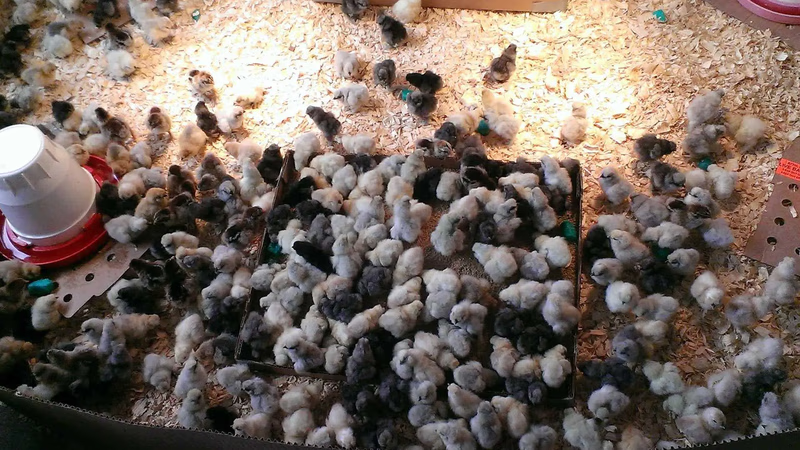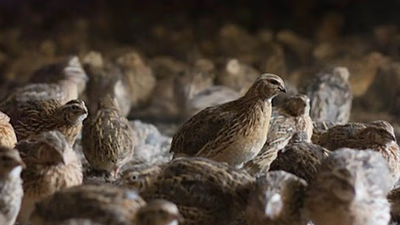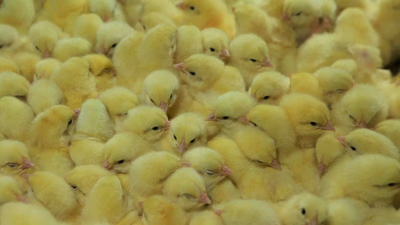
Poultry farming in the Middle East: chickens and turkeys thrive.
In the region of West Asia and the Middle East, the marketing and trade of meat birds, including chickens, turkeys, geese, ducks and ostriches, has been considered as an important and growing industry. In this region, there is a high demand for white meat and products derived from it, and the breeding of meat birds is carried out at the industrial and agricultural level in order to meet consumption needs.
Due to the high demand for white meat in the West Asia and the Middle East region, the trade of meat birds is booming in this region, and the facilities for breeding, processing and exporting to other countries are also available. The nomads and nomads of the desert regions of the Middle East, including in countries such as Iran, Iraq, Saudi Arabia, and the countries of the Persian Gulf, are an important and influential part of the poultry market in West Asia.
Marketing of meat birds in this region is mainly done in three areas:
- Industrial breeding : In this method, meat birds are bred industrially and on a large scale. The advantages of this method include the provision of high-quality and large numbers of meat poultry products, optimal management of resources, and greater productivity in the field of bird nutrition and health. This method is popular in the developed countries of the region, such as Saudi Arabia, United Arab Emirates and Turkey.
- Agricultural breeding : In this method, meat birds are bred in farms and agricultural spaces on a small scale. This method is generally common in rural and agricultural areas of the region. Chicken and turkey are among the birds that are farmed in this area.
- Marketing of products : products derived from meat birds, such as fresh meat, fillets, nuggets, turkey nuggets and other products are sold in bulk in this region. These products are raw or food products, also packaged and ready for export to other countries.
The nomads and nomads of the desert areas of the Middle East as the main producers in many countries, such as Iran, play a very important role in providing local products such as chicken, turkey, goose, duck and ostrich meat. They often use traditional and agricultural methods to raise birds and sell their products to local markets. Farmers, as breeders of poultry and chicken products, can play an important role in providing raw products such as eggs, meat and poultry skin. These raw products can be used as raw materials for food, packaging and industrial products.
They can supply their products to local and regional markets as independent growers, or they may interact with and supply their products to major traders and suppliers in large markets. Residents of the desert regions of the Middle East usually use local breeds and populations of poultry, which contributes to the genetic diversity in this region. Genetic diversity in poultry can increase resistance to diseases and local weather conditions and be effective in maintaining the stability and development of the poultry industry. The inhabitants of the desert regions of the Middle East play an important role in providing local poultry products, trading products and maintaining genetic diversity. This close relationship with nature and life in the deserts has made them one of the main factors in providing poultry and chickens in the region.
-

The poultry breeding and sales industry in the Middle East and West Asia is experiencing significant growth due to high demand for white meat. This sector encompasses various methods of breeding, including industrial and agricultural practices. Industrial breeding, prevalent in developed countries like Saudi Arabia and the UAE, focuses on large-scale production, ensuring high-quality meat products through optimal resource management. Conversely, agricultural breeding occurs on a smaller scale in rural areas, where local farmers raise chickens and turkeys. The marketing of poultry products includes fresh meat, fillets, and processed items like nuggets, which are sold both locally and for export. Nomadic communities play a crucial role in this market by utilizing traditional methods to raise birds and contribute to local supply chains. Their practices enhance genetic diversity among poultry breeds, improving resilience against diseases and adapting to local climates. This dynamic interplay between modern industrial techniques and traditional agricultural methods shapes the region"s poultry landscape. "
-

Poultry, particularly chickens, plays a vital role in the economies and cultures of the Middle East and West Asia. Chickens serve as a primary food source and are integral to various religious ceremonies. The economic impact of poultry varies across regions, influenced by local market conditions. Chicken production has industrialized significantly, providing food security and employment opportunities, especially for youth. Other meat birds like turkeys, geese, and ostriches also contribute to the economy; turkey is often featured in high-end dining while ostrich products are gaining traction in fashion and leather industries. Poultry is not only essential for sustenance but also serves as a source of income through meat, eggs, and by-products like manure. Additionally, meat birds symbolize prosperity during cultural events such as weddings and religious festivals. The governance surrounding poultry production is crucial; leaders influence policies that affect breeding practices, market regulations, and international trade relations. Overall, the poultry industry is a cornerstone of economic stability and cultural identity in these regions.
-

The poultry market in West Asia and the Middle East is influenced by cultural, economic, and regulatory factors. Chicken remains a dominant product, with fresh, frozen, and processed varieties widely consumed. Quail and turkey also have significant markets, offering high-protein options. Ducks and geese are popular in upscale dining, while ostrich has a niche presence. Key players in the poultry trade include Saudi Arabia, the UAE, Oman, Turkey, and Iran. These countries are major importers and exporters due to their population needs and geographical advantages. The dynamics of this market can shift based on trade policies, economic conditions, and consumer preferences.
-

White meat, particularly chicken and turkey, plays a significant role in the diets of Asian Arabs and Muslims, adhering to halal dietary guidelines. Halal practices dictate specific slaughtering methods that ensure the meat is permissible for consumption. While traditional celebrations often involve larger animals, urban households increasingly opt for white meat due to its practicality and affordability. The poultry industry has expanded in the Middle East, making chicken a staple protein source. Cultural preferences influence the consumption of white meat, with various dishes like kebabs and biryani being popular. However, dietary habits can vary across regions and cultures, with some birds considered haram under Islamic law. The nutritional benefits of white meat include being leaner than red meat and providing essential vitamins and minerals. Overall, white meat is a versatile ingredient that aligns with health-conscious choices among many in the region.




